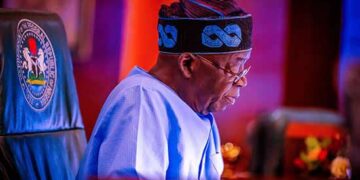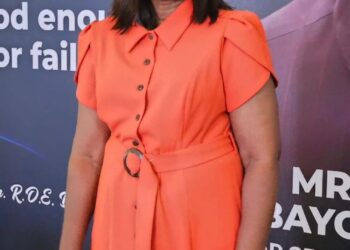The facts reproduced in the majority judgment and the decisions on the interlocutory applications taken at the pre–hearing are all hereby adopted as mine.
The conclusions made on the interlocutory applications are also adopted together with the decision of the majority judgment as it concerns issue No. 1, that is the issue concerning the qualification of the 2nd Respondent to context the election, the subject matter of the present petition.
For avoidance of doubt, I agree in toto with the majority decision of the Tribunal that the 2nd Respondent was at the time of the election qualified to contest the said election.
On issues Nos. 2 and 3 which relate to the second and third grounds of the Petition, I, with utmost deference, disagree with the analysis of the evidence led at the Tribunal and the ultimate decision arrived at in the majority decision. I will outline briefly the reasons for my disagreement anon.
First, the reliefs sought by the Petitioners in paragraphs 72(a) (i) are all declaratory in nature. The law enjoins the Petitioners to rely on the strength of their case. The entire petition succeeds or fails on the strength of the Petitioners‘ case as the onus of proof of same squarely rests on them. The evidence of PW1, consists of conflict and inconsistencies and was thoroughly shaken in cross-examination. Apart from errors and inconsistencies in paragraphs 33 and 67 of his Written Statement on Oath, he admitted that BVAS Machine is the primary source of the result which he claimed he analysed, but he never used the said BVAs Machine(s) to prove or verify exhibit BVR.
In paragraph 5 of his Written Statement on Oath he stated that Forms EC8A, EC8B, EC8C, EC8D and EC8E and the INEC BVAS he used were released to him on 17th July, 2022.The INEC BVAS report of 17th July, 2022 was not tendered in evidence. What the Petitioners anchored their case upon is a BVAS report of 27th July, 2022 which was tendered and admitted as exhibit BVR. Exhibit RC1 shows that the said BVAs report (exhibit BVR) was paid for on 28th July, 2022.
PW1 listed several documents in his Written Statement on Oath in paragraph 34 but denied, during his cross examination, using them in his analysis. PW1 also did not satisfactorily show he is an expert whose testimony would be relied upon by this Tribunal on the analysis which he purportedly made.
PW1, the 2nd Petitioner’s State Collation Officer, in paragraph 2 of his Written Statement on Oath stated that the facts of this case are as personally known to him or as relayed to him by others. The same is the content of paragraph 5 of PW2’s Written Statement on Oath. In the entire gamut of PW1’s Written Statement on Oath from paragraphs 1 – 35 and those of PW2 at paragraphs 1 – 70 the two Petitioners‘ witnesses failed to differentiate which of their testimonies are based on personal knowledge and those that are not. This offends section 115(3) of the Evidence Act 2011. The evidence of PW1 and PW2, therefore, ought to be discountenanced. See GUNDIRI vs. NYAKO (2014) 2 NWLR (pt. 1391) 211 at pp. 243 244 paras. E A.See also ACN vs. NYAKO (2015) 18 NWLR (pt. 1491) 352 at pp 384-385 paras. H–D.
In line with the authorities above, I discountenance the evidence of PW1 and PW2. The effect of this is that there is paucity of evidence or none at all to sustain the Petitioners‘ case.
The second point is that the Petitioners predicated their case on an incomplete and inchoate document which is exhibit BVR. I have noted that the BVAS report the Petitioners claimed they obtained on 17th July, 2022 which forms the basis for their Petition was not led in evidence. The BVAS report which the Petitioners tendered (exhibit BVR) was issued on 27th July, 2022. It was a report from the data uploaded to the back end server of INEC.
The evidence of RW1, which is unchallenged, confirmed that as at the date exhibit BVR was issued, the 1st Respondent had not synchronized the data in the BVAS machine and the back end server and the physical extraction of data from the BVAs machines. The two points to be noted here are:
- The Petitioners‘ case, as presented by them, is dependent on a non–existent document obtained on 17th July, 2022.
- The Petitioners‘ case is firmly anchored on exhibit BVR which is an inchoate and incomplete document.
The Petitioners have descended heavily on exhibit R. BVR which is another BVAS report obtained from the same source as exhibit BVR. Exhibit R. BVR was issued on 22nd August, 2022 by INEC too. There is yet another report from BVAs. It is exhibit RWC. Exhibit RWC, unlike exhibits BVR and R. BVR, is completely of a different specie and nature. Both exhibits BVR and R. BVR were issued by 1st Respondent in compliance with the duty imposed on it by section 74(1) of the Electoral Act, 2022.
The Petitioners have made heavy weather of even exhibit RWC and have urged this Tribunal to discountenance both exhibits R. BVR and RWC for containing inconsistent entries. In the Petitioners‘ replies they tried to show some tables that tend to impeach exhibits R. BVR and RWC.
A critical evaluation of the material evidence tendered in this petition will reveal that exhibit RWC is the data directly extracted by virtue of the Order of this Court, from exhibits R. BVM 1 – 119 – R. BVM 1-51 which are the actual machines used at the 16th July, 2022 Governorship Election, the subject matter of this Petition.
The contest in this petition is over voting in 749 polling units which the Petitioners later reduced to 744 polling units. No doubt, the extant Electoral Act, in section 51(2), defined over voting as:
foght
2 Where the number of votes cast at an election in any polling unit exceeds the number of accredited voters in that polling units…..
The new Electoral Act, by Section 47(2), has made it mandatory for the use of a smart card reader or any other technological device that may be prescribed by the Commission (INEC) for the purposes of accreditation of voters in the manner prescribed by the commission. In this instance, INEC introduced BVAS Machine. The said INEC brought out a Regulation and Guidelines outlining how the conduct of Election should proceed. That Regulation is Exhibits 1 and 2 tendered by the Petitioners.
The prominence given to BVAS Machine as a technological device to be used for the conduct of the Election in contest can be seen in both the Electoral Act, 2022 and exhibits 1 and 2. In Sections 64(4) and (6) of the Act, the Electoral Act emphasized the use of it in collation of results and in resolving dispute arising from collation of result.
The point I am making is that the BVAS Machine itself is the primary source of the data to be used in determining exactly what transpired at the polling units on the day of an election with respect to accreditation of voters. Exhibits R. BVM 1-119 – RBVM 1- 51 are the machines themselves which were tendered and, by the record of the Tribunal, were admitted and taken as demonstrated.
Exhibit RWC which is a report of the physical inspection of the BVAS Machines is, therefore, the most preferred document that will decide the contest, between the parties, as to over voting. It is the actual data/information on the BVAS Machines themselves (exhibits R.BVM 1-119 – R.BVM 1-51).
It is remarkable to note that the Petitioners did not controvert the exhibits R.BVM series and the report of physical inspection of them, exhibit RWC. They stand unchallenged. It will be, to say the least, most preposterous to jettison exhibit RWC or to regard, as suggested by the Petitioners, exhibit R.BVM series as “lame” or “dumb” exhibits. Exhibit RWC is a document made from the primary sources which are the machines used on the Election date, 16th July 2022. The entries on exhibit RWC are in existence and were there on the machines on the date of the election. Any wonder Sections 64(4),(5) and (6) Electoral Act, 2022, have recognized BVAS Machine itself as a key material to be used in collation of results and in resolution of any dispute arising there from.
The Petitioners are not saying that the entries on exhibits R.BVM series (the machines themselves) are not same as the entries in exhibit RWC. Their grouse is that, since exhibit RWC came from the same 1st Respondent, it will not be allowed to stand in view of some discrepancies in figures in them vis a vis the entries in exhibits BVR and R.BVR. The justice of this petition lies on this issue. Evidence of RW1 which was corroborated by both Pw1 and Pw2 is clear that there may exist some inadequacies in the use of BVAS Machine. The three witnesses all agreed that failure of network or failure of the operator of the machine in pressing the “send” button will affect the data sought to be transmitted. It is in evidence too that while the BVAS Machine itself does not require data or network to function, the Back End Server require that for proper uploading of information.
It follows therefore that the reports got from the 1st Respondent’s Back End Server may not be complete owing to the inadequacies in the technology.
In view of the following, I hold that exhibit BVR is a product of inadequacies and cannot be the best evidence for determination of the accurate number of accredited voters on 16th July 2022 election. The same is true of exhibit R.BVR.
The best evidence for that purpose is exhibit R.BVM 1-119 R.BVM 1 – 51 used in the polling units under contest, and I so hold.
Finally, I will remark that it is not a fact that Voters‘ Register has no place in the present dispensation with the enactment of Electoral Act 2022. That is a misconceived fact. Exhibit 1 which is the Regulation and Guidelines of Election 2022 in Clauses 14(a), 18(a), 19(b)(iv), 19(d)(i), e(ii) and 20(iii) referred to some importance of Voters‘ Register in the scheme of things. Clause 19(e)(ii) and (iii) provide thus:
- The verified voter shall proceed to the APOI! who shall;
(I) ………………………………………………………………………………………………….
(ii) Check the Register of Voters to confirm that the Voter’s name, details and Voter Identification Number (VIN) are as contained in the Register of Voters.
(iii) Tick the appropriate box of the horizontal boxes on the right margin beside the voter’s details on the Register, showing the category of election and that the person’s name is on the Register of Voters.
All these are part of the accreditation process. In clause 20, where accreditation fails the APO1 shall tick the appropriate box against the voter’s name label FA (denoting “Failed Accreditation“) at the left margin of the voter’s details on the register.
All these go to show that the Register of Voters is still in use in the present Electoral dispensation. The question may be asked “why would there be requirement for ticking the appropriate box at the right margin beside the voter’s details for a voter that is verified or at the left margin for a voter whose accreditation has failed? The simple answer is that the Voter’s Register may be called to use in determining issue of number of successful accredited voters for any particular election.
I hold that Register of voters is still relevant even though more prominence has been given to BVAS. The Petitioners ought to have brought in the Voter’s Register to prove their case. The failure to call the Voters Register in support of their case makes it very weak.
I hold that the Petitioners have failed to prove issue of over voting by reason of non–compliance with the provisions of the Electoral Act. They also have not proved that the 2nd Respondent was not duly elected by majority of lawful voters cast at the election.
I will need to point out that the inadequacies in our system such as power outage, network failure and paucity of relevant amenities should not be overlooked as we operate in a problem condition. It will be most unfortunate for a contestant who lost election to hurriedly apply and get a report from an incomplete source and then build a case on it to topple a candidate who has been declared the winner. It is exactly the case here. That is not the intendment of the extant Electoral Act.
On the whole, I hold that the Petitioners‘ case have not been satisfactorily proved. It ought to be and is hereby dismissed.
I make no order as to cost.
B. A. OGBULI
MEMBER 1
27/01/23













